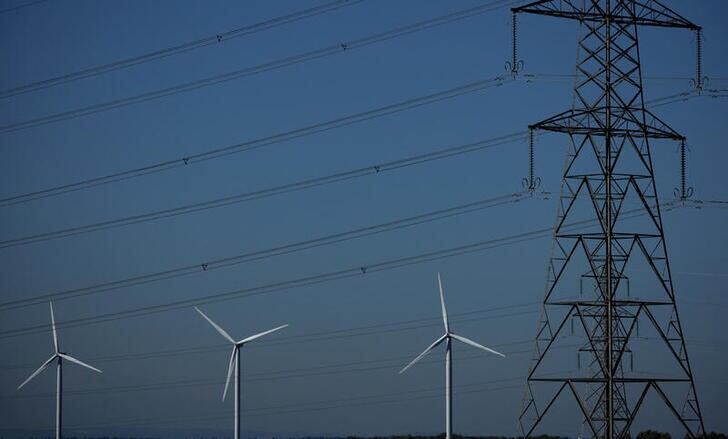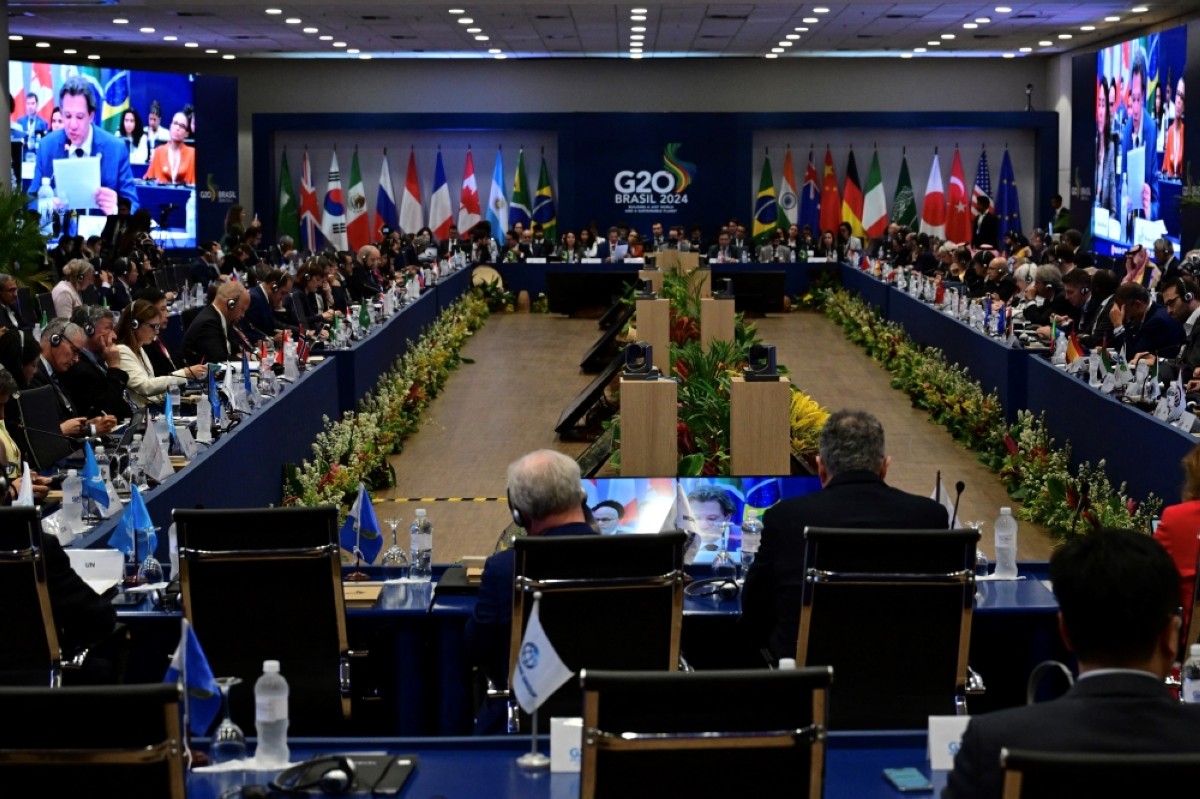UK’s creaking power grid leaves green energy revolution adrift
PORTSMOUTH, England: British ferry operator Wightlink wants to order a $60 million, state-of-the-art electric ferry to make its crossings cleaner and greener. But it can’t commission the vessel until it gets a power upgrade.

A row of electricity pylons is seen near the Frodsham on shore wind farm in Frodsham, Britain. -- Reuters.
The company carries 4 million islanders, holidaymakers and festival goers every year on a five nautical mile crossing between England’s picturesque southern coast and the Isle of Wight. The strait, known as the Solent, is popular with yachts and leisure craft, while much of the coastline is protected. Wightlink has funding in place for a electric-powered car ferry that would reduce emissions both at sea and in port, following in the path of pioneer Norway, which introduced the world’s first in 2015.
The government has said decarbonizing maritime transport is essential to achieving Britain’s net zero target by 2050. Domestic maritime vessels represented around 5% of Britain’s greenhouse gas emissions from transport in 2020, more than rail and buses combined, the government said in a 2022 report. And the long average lifespan of vessels means that greener ships must start being deployed by next year to achieve a green fleet by the 2050 deadline.
But interviews with 22 people - including investors, power company employees, government officials, Wightlink staff and countryside campaigners - revealed that long waits for grid connections combined with planning obstacles are putting millions of pounds of green transport investment at risk. “We want to go electric. We think it’s the right thing,” Wightlink Chief Executive Keith Greenfield told Reuters onboard a hybrid ferry, which uses diesel to charge electric batteries, saving around 20 percent in emissions.
“We’re held back by a lack of shore power.” Wightlink needs to order its next ship within 12-18 months to replace an ageing vessel, but cannot commit to go solely electric without a legally binding power contract, Greenfield said. Regional network operator Scottish & Southern Electricity Networks (SSEN) told Wightlink two years ago that a new connection at its Portsmouth terminal would require infrastructure upgrades, including at a nearby substation on the national high-voltage network, according to a document reviewed by Reuters and ferry company executives.
The substation improvements by National Grid were not scheduled to be completed until 2037. After Reuters interviewed Wightlink executives, SSEN said this month enough power may be available without the National Grid work, and it would hold new talks with the ferry company. If Wightlink accepts a new quote from SSEN, it will be able to guarantee the capacity and confirm its place in the connections queue. “We look forward to meeting them early next month to progress proposals,” a SSEN spokesperson told Reuters, adding that there could be more network capacity available than previously forecast so the company had “potential to progress” with Wightlink’s request.
Britain will hold a general election on July 4 with polls predicting a victory for the opposition Labour party after 14 years of Conservative rule. Wightlink’s dilemma underscores the challenge Britain’s next government will face in delivering the renewable energy and grid infrastructure needed to power a shift to electric ferries, cars and domestic heating in Europe’s second-largest economy. Britain was the first major economy to create a legally binding 2050 net zero target. It’s a leader in offshore wind and it has halved emissions since 1990 after closing coal power plants.
Central to the net zero target is a plan to decarbonize the electricity system by 2035. But the state adviser, the Climate Change Committee, said in a progress report in June 2023 that the government lacked a full strategy to get there. How to achieve net zero, and at what cost, has become a battleground both nationally and locally.
Britons support the policy of net zero but they often baulk at the costs and infrastructure that may be required to get there, surveys show. Prime Minister Rishi Sunak scrapped some targets last year, saying he needed to retain public support in the face of “unacceptable costs”. Labour has pledged to decarbonize the electricity grid by 2030, five years ahead of the Conservatives’ target of 2035. Reforming grid connections is one part of its ambitious plan.
To hit net zero, Britain needs to expand the high-voltage network in England and Wales carried overhead on large pylons, which then connect to regional distribution networks. The grid, owned and operated by London-listed National Grid Plc, was built to transmit power generated from coalfields in areas like Yorkshire and Nottinghamshire across the country. Today more electricity is coming from wind farms in Scotland and off Britain’s east coast, and new infrastructure is needed to transmit it to London and the south. — AFP.











